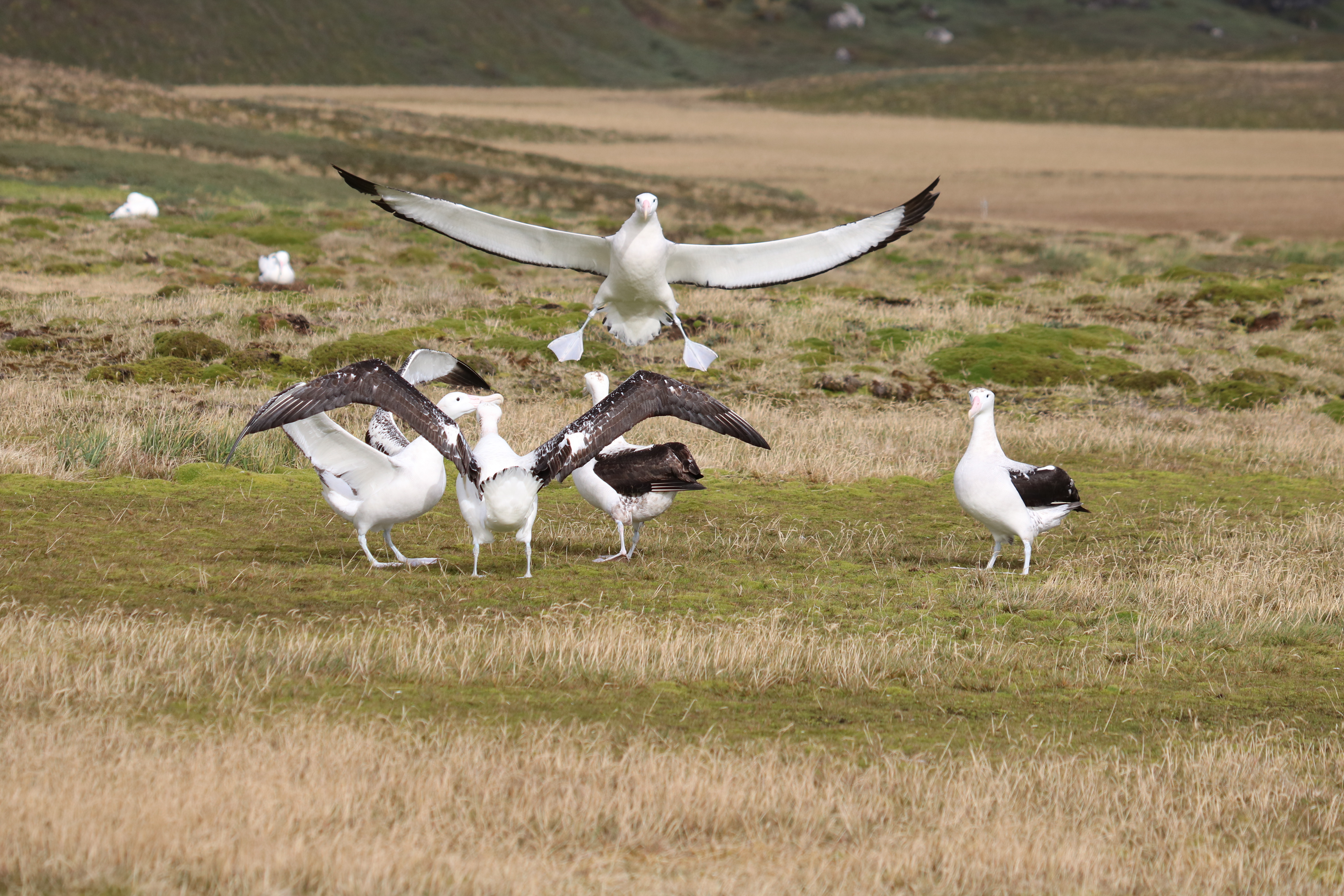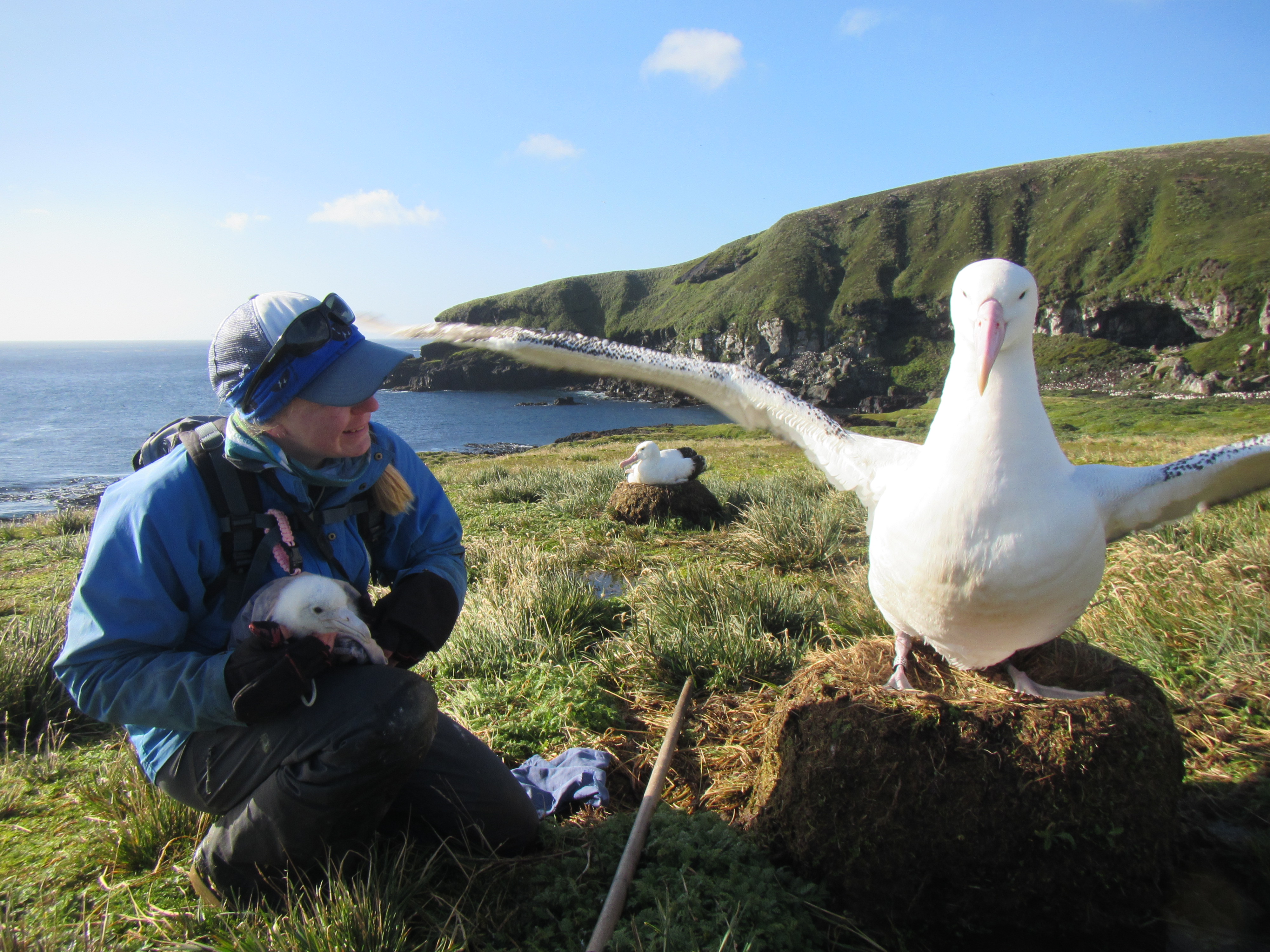
“I have always been mesmerized by the ocean and the life in it. Science allows us to unlock some of the ocean's secrets and helps us understand more about our world. We can only protect what we understand.”
From a young age, I always wanted to find ways to help the ocean, so starting a career in marine biology was the obvious choice for me. I have always been passionate about marine life and understanding why animals respond in particular ways. I have also been drawn to the adventure and the possibility of discovering new things which is why I love working in the field. I have been incredibly blessed to have been able to work on seabirds on several island for my postgraduate degrees, including Cape Gannets Morus capensis on Bird Island, Eastern Cape, South Africa (BSc Honours cum laude in 2015 - using tracking and video data) and on the foraging ecology of Wedge-tailed Shearwaters Ardenna pacifica on Reunion, and D'Arros and Fouquet Islands, Amirante Group belonging to the Seychelles during 2016-2018 (MSc cum laude).
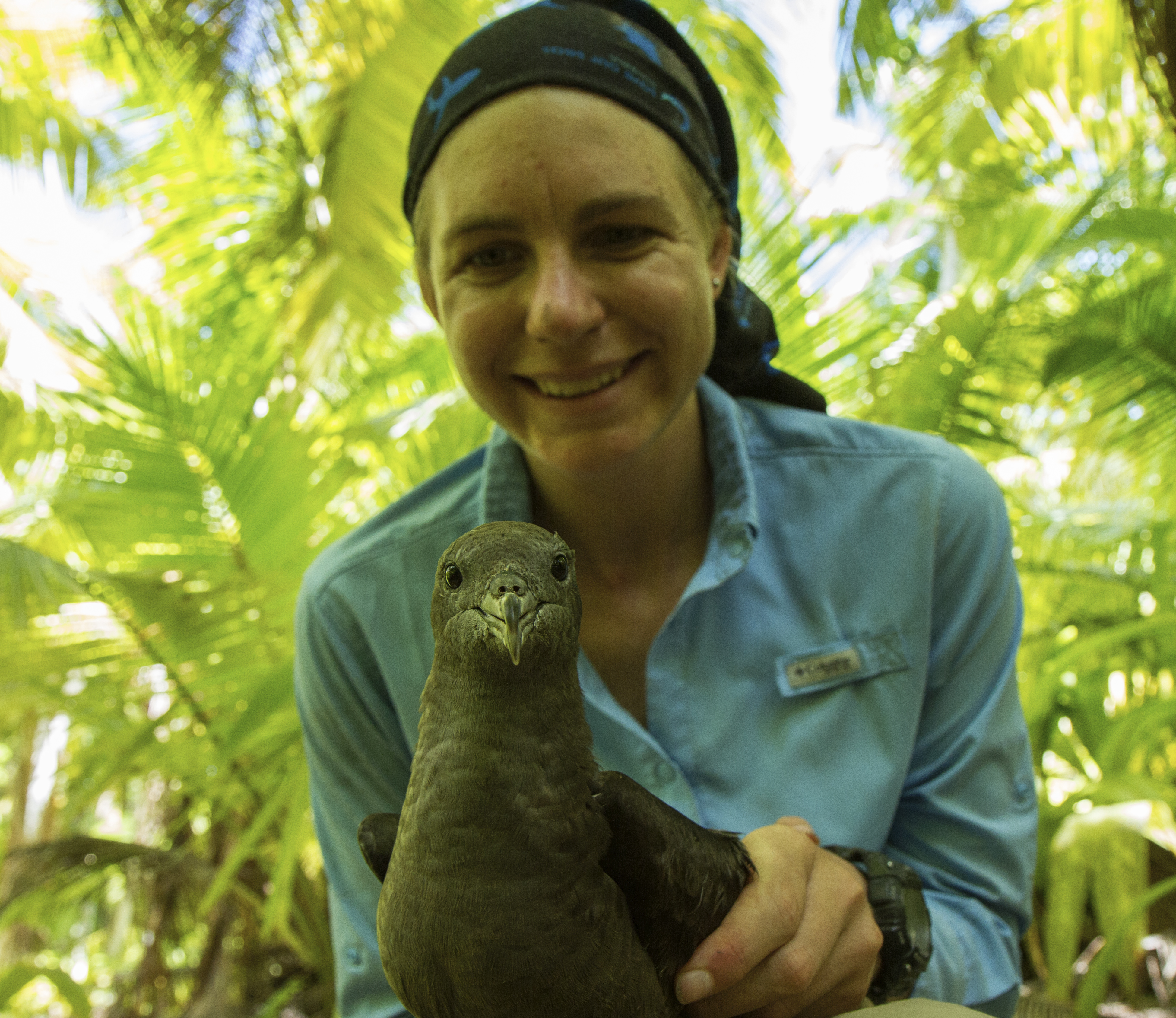
Danielle holds at Wedge-tailed Shearwater on Fouquet Island; photograph by Luke Gordon
On South Africa’s sub-Antarctic Marion Island I have worked with basically every seabird that moves undertaking tracking, monitoring, diet sampling and camera work as a member of the M75 and M77 Overwintering Teams of 2018/19 and 2020/21. In between studies I have been able to work with other marine species including seals, turtles, corals and seals and even moved to drier parts (i.e. terrestrial fields) working with hornbills. I have quickly been turned into an avid birder, while learning more about behavioural ecology and physiology.
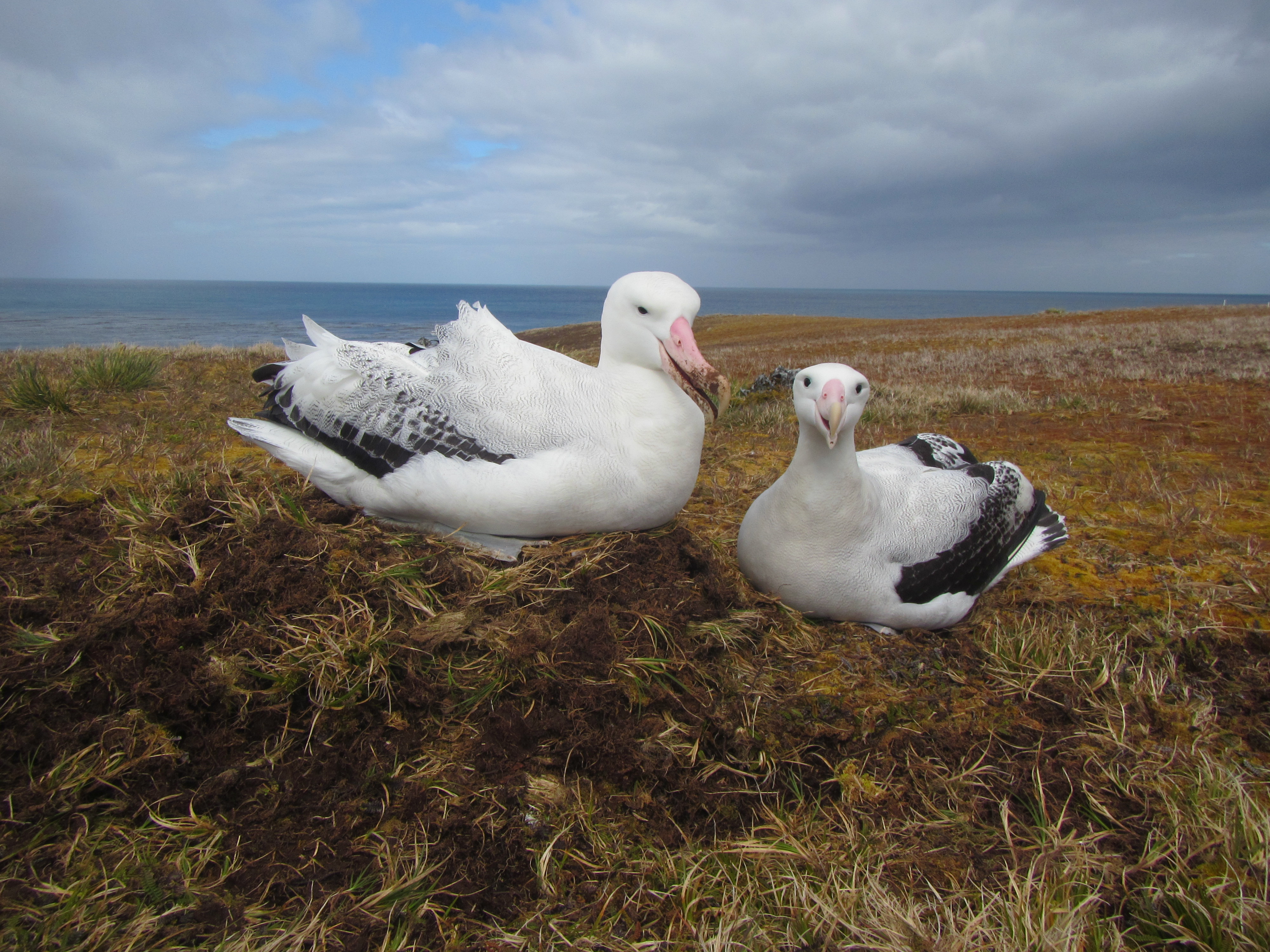
A Wandering Albatross pair on Marion Island. The larger, whiter bird is on the nest, the the female beside him.
We know that nothing happens in isolation. Where an animal forages, and the amount of time it spends performing a particular behaviour, will impact its life history. This is the general premise for my PhD “Linking Foraging Behaviour and Demographic Responses of Wandering Albatrosses on Marion Island” at the Marine Apex Predator Research Unit (MAPRU) at Nelson Mandela University in Gqeberha, South Africa, with Prof. Pierre Pistorius, Prof. Peter Ryan and Dr Chris Oosthuizen as my supervisors. My aim is to assess the extent to which variability in foraging behaviour affects life history and demographic rates of Wandering Albatrosses Diomedea exulans (globally and regionally Vulnerable) on Marion. This will be done by looking at how adult flight characteristics (e.g. trip duration and path length from six years of at-sea GPS tracking data) influence chick growth and survival. The second aim is to assess the impacts of environmental variability and the demographic responses (survival and breeding success) of Marion’s Wanderers. Here I will largely rely on the long-term demographic data (>37 years) to see how climate variability impacts their survival and breeding success. We already know that fisheries have a really big impact on albatross populations; however, I will try to find what else influences their survival and breeding success.
Incoming! A young bird joins a “gam” of pre-breeding juveniles for a group display
For now, I am homebound, and only volunteering occasionally where I can at the SANCCOB EC Marine Rehabilitation Centre and will hopefully finish my PhD over the next three years. I would like to push to finish sooner so that I could be a part of the mouse eradication team for Marion Island. I never knew that a place could steal one's heart like Marion has, and I want to be part of the team that helps restore this little piece of paradise.
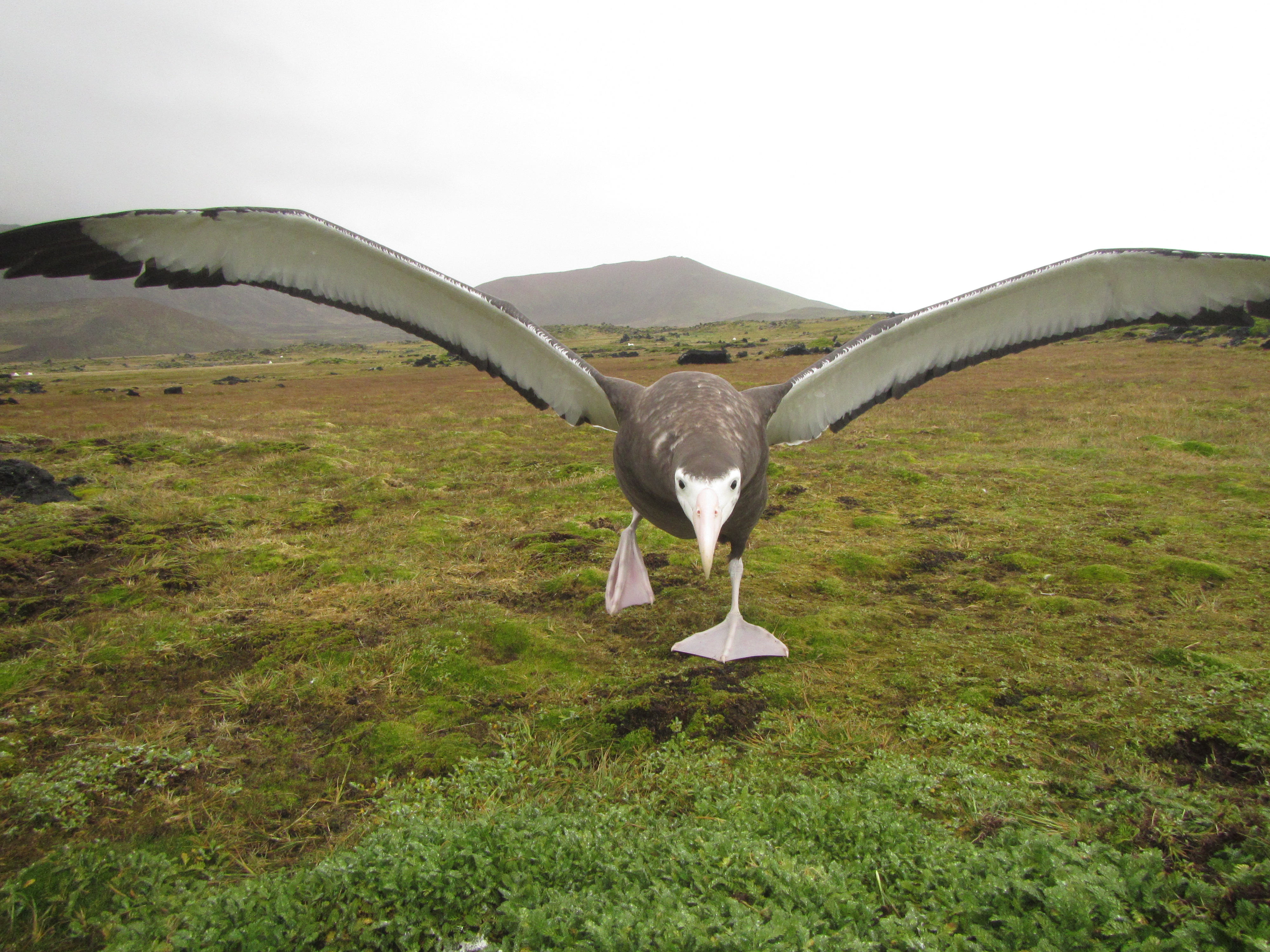
Ready to fledge? A feathered Wandering Albatross chick approaches the photographer with determination
Photographs by Danielle Keys
Selected Publications:
Keys, D.Z. 2018. The foraging ecology of Wedge-tailed Shearwaters (Ardenna pacifica) in the tropical Western Indian Ocean. MSc thesis, Nelson Mandela University, Gqeberha, South Africa. 103 pp.
Orgeret, F., Reisinger, R.R., Carpenter-Kling, T., Keys, D.Z., Corbeau, A., Bost, C.-A., Weirmerskirch, H. & Pistorius, P.A. 2021. Spatial segregation in a sexually-dimorphic central place forager: competitive exclusion or niche divergence? Journal of Animal Ecology doi.org/10.1111/1365-2656.13552. [click here].
Danielle Keys, Marine Apex Predator Research Unit, Nelson Mandela University, South Africa, 30 September 2021
Editorial note: I set up the three long-term monitoring colonies of colour-banded Wandering Albatrosses on Marion Island back in the early 1980s (when there was a thinking by some that "monitoring" was not really proper work for academics) so it is most pleasing indeed to see young scientists not then born use the ensuing decades of data to earn their doctorates. It makes me happy. John Cooper, ACAP Information Officer

 English
English  Français
Français  Español
Español 